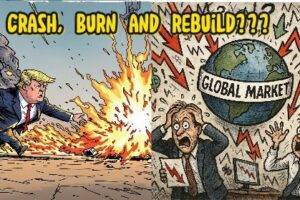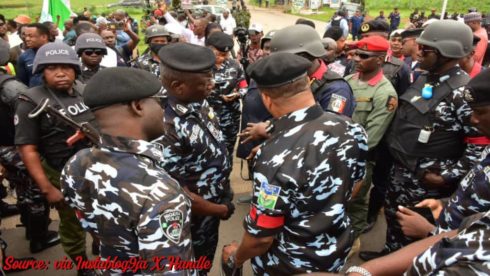The streets of Abuja erupted in chaos as hoodlums clashed with police forces during what began as a peaceful protest. The Nigerian Police Force reported that they were forced into a fierce gunbattle with armed troublemakers who attempted to disrupt the demonstration. Eyewitnesses described a scene of pandemonium as security forces deployed teargas and live ammunition to disperse the violent elements and restore order.
As the confrontation unfolded, peaceful protesters found themselves caught in the crossfire, scrambling for safety amidst the chaos. The police maintain that their actions were necessary to protect both the demonstrators and the public from the armed hoodlums who sought to hijack the protest for their own malicious purposes.
Casualties and Arrests: The Aftermath of the Clash
In the wake of the violent encounter, the police confirmed that several arrests were made and multiple police officers sustained injuries. The confrontation left a trail of destruction, with damaged property and injured civilians adding to the toll. Authorities report that the hoodlums were armed with an array of dangerous weapons, including firearms and bladed implements, posing a significant threat to both protesters and law enforcement alike.
As tensions remain high, the police have issued urgent appeals to protesters, urging them to maintain peaceful conduct and avoid engagement with potential troublemakers. The authorities emphasize that their primary goal is to ensure the safety of all citizens while preserving the right to peaceful protest.
Undeterred Protesters: A Call for Change Amidst Turmoil
Despite the outbreak of violence, the core group of protesters in Abuja remains resolute in their demands for sweeping reforms. Their voices echo through the streets, calling for an end to endemic corruption, the creation of economic opportunities, and a complete overhaul of governance structures. The demonstrators have pledged to continue their campaign until tangible changes are implemented, challenging the government to take decisive action.
The protest movement has gained momentum, drawing support from various sectors of society. Organizers have emphasized the importance of maintaining a peaceful approach, distancing themselves from the violent elements that threatened to derail their cause. As the demonstrations persist, the pressure on the government to address these grievances continues to mount.
Government Under Fire: The Demand for Concrete Action
As the crisis deepens, the Nigerian government finds itself under increasing scrutiny and pressure to respond effectively to the protesters’ demands. Critics argue that the administration’s perceived inaction and silence in the face of growing unrest have only served to embolden the demonstrators and escalate tensions. Calls for meaningful dialogue and concrete reforms have grown louder, with many urging the government to engage directly with protest leaders.
The international community has also taken notice, with diplomatic missions and global organizations closely monitoring the situation. The government’s response to this crisis is seen as a critical test of its commitment to democratic principles and its ability to address the needs of its citizens. As the world watches, the pressure on Nigerian authorities to find a peaceful and constructive resolution intensifies.
Anatomy of Chaos: How Hoodlums Hijacked the Protest, Clashed with Police
Eyewitness accounts paint a disturbing picture of how the peaceful demonstration descended into chaos. According to reports, a group of organized troublemakers infiltrated the protest, strategically positioning themselves to cause maximum disruption. As the situation unfolded, these hoodlums unleashed a wave of destruction, smashing windows, setting fires, and indiscriminately attacking bystanders.
The police response to the outbreak of violence has come under scrutiny, with many questioning the delay in intervention that allowed the chaos to spread. Critics argue that better preparation and a more rapid response could have contained the situation before it spiraled out of control. The incident has raised serious questions about security protocols and the ability of law enforcement to protect peaceful demonstrators from violent agitators.
Seeking a Peaceful Resolution
As Abuja grapples with the aftermath of the violent clash, there is a growing consensus on the need for a peaceful resolution to the ongoing crisis. Stakeholders from all sides – including protest organizers, government officials, and security forces – are being called upon to engage in constructive dialogue and find common ground. The focus is on addressing the root causes of the unrest while ensuring public safety and preserving the right to peaceful protest.
The eyes of the world remain fixed on Nigeria as it navigates this critical juncture. The government’s ability to balance the demands for reform with the need for stability will have far-reaching implications for the nation’s future and its standing in the international community. As discussions continue, there is hope that a peaceful path forward can be found, one that addresses the legitimate grievances of the protesters while maintaining the peace and unity of the nation.
Table of Contents
Discover more from OGM News NG
Subscribe to get the latest posts sent to your email.














